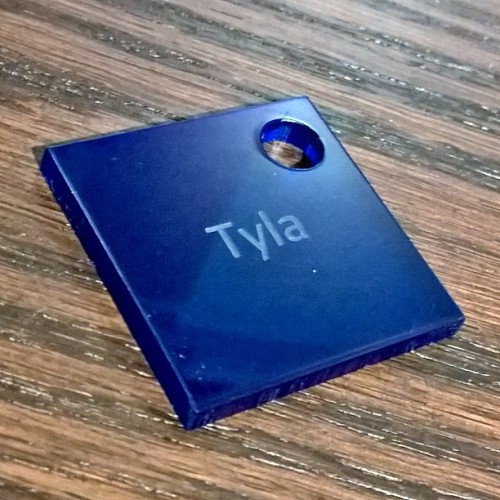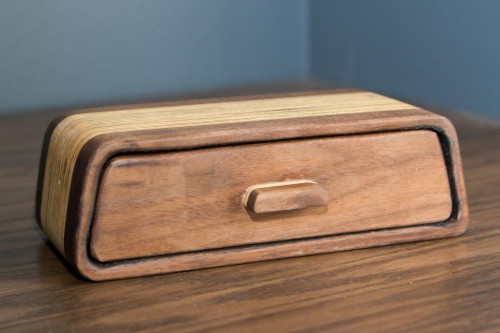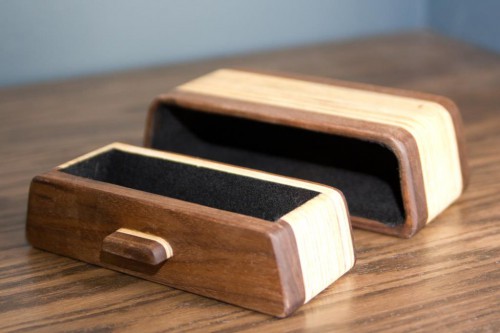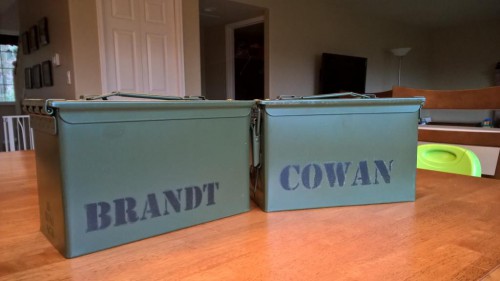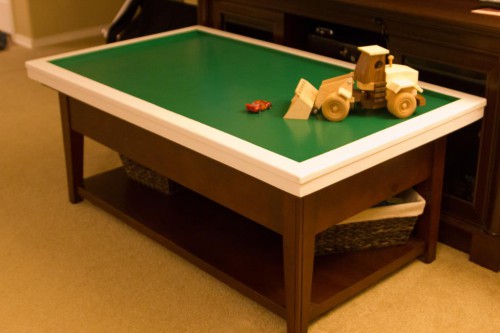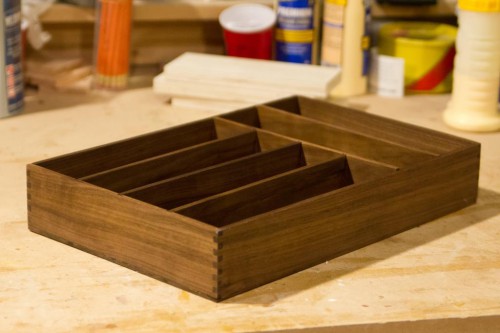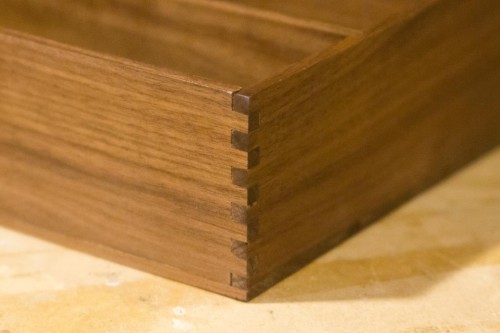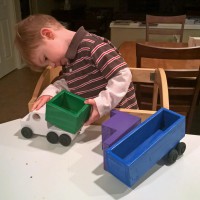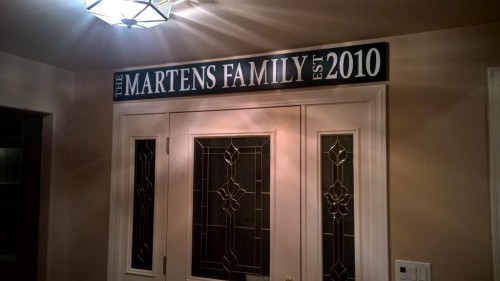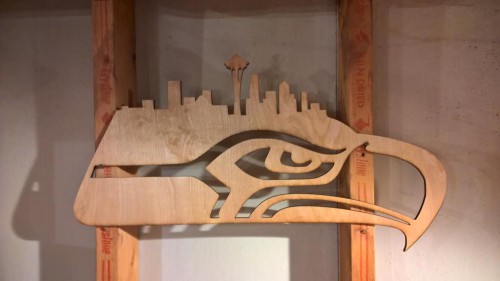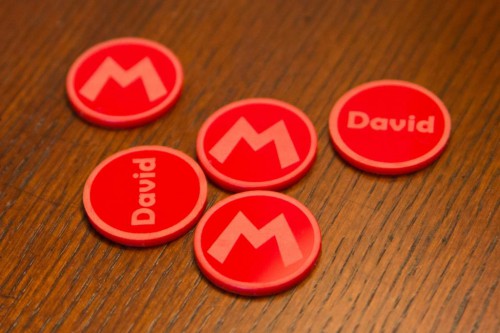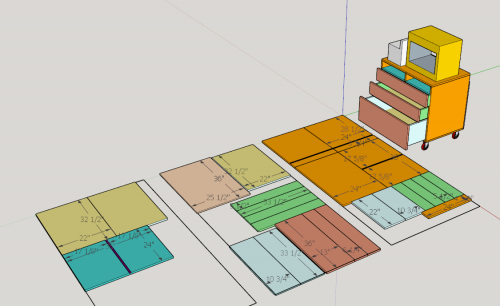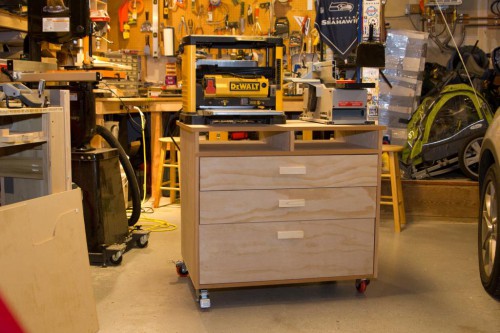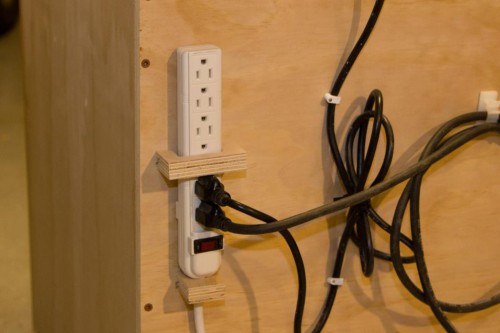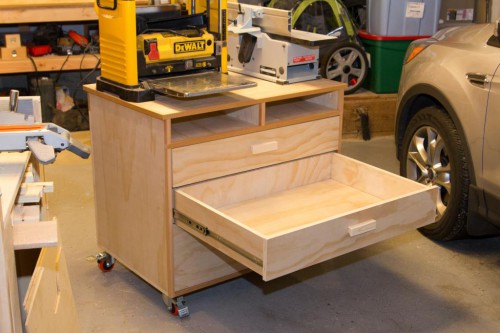Tyla has been looking at customized family signs on Etsy. She had a hard time finding one that was the right size and design and I had a hard time paying that much for a piece of painted plywood. We joined forces and designed our own custom sign. Instead of painting it, I wanted to cut each letter out so it would look a little more interesting.
I designed it on the computer, printed off the large tiled pages and then spray glued the first letter onto a thin piece of wood. I don’t have a scroll saw so I put the 1/4″ blade on my bandsaw and got to work. Between the sawing and sanding I realized it was going to take a LONG time to get through the entire sign. Time for plan B.
At work they have a “Maker Garage” for employees to use for free. It’s full of a bunch of tools that you need to get projects done like a drill press, soldering irons, etc. There’s a big community around it that shares ideas and teaches new skills. They also have an “advanced” part of the room that contains more expensive tools. You have to go through training to use them but there are some incredible machines in there including a milling machine, CNC, a couple different 3D printers, an computer controlled embroidery machine and two laser cutters. I’m excited by all of those things but the laser cutter had one of the easier onboarding processes and it was exactly what I needed for this project.
It took a few hours of online and in-person classes but I’m now certified to use their laser whenever I want! I just have to provide my own materials or scrounge through the scrap bin. It can either cut all the way through material or etch it. Obviously it will only etch some materials like stone, but you can either cut and/or etch lots of materials like acrylic, wood, leather or even food. Basically you can do anything you want as long as it’s not reflective to the laser, it’s not going to immediately catch fire, and it doesn’t release poisonous gas when it’s cut.
To pass the training class, we had to modify their sample and successfully make a safe cut with some simulated problems along the way. So what you see below isn’t anything fancy, but it’s my first output from the laser cutter! Thank you Tyla for spending extra time with Elijah alone at home while I finished this training.
